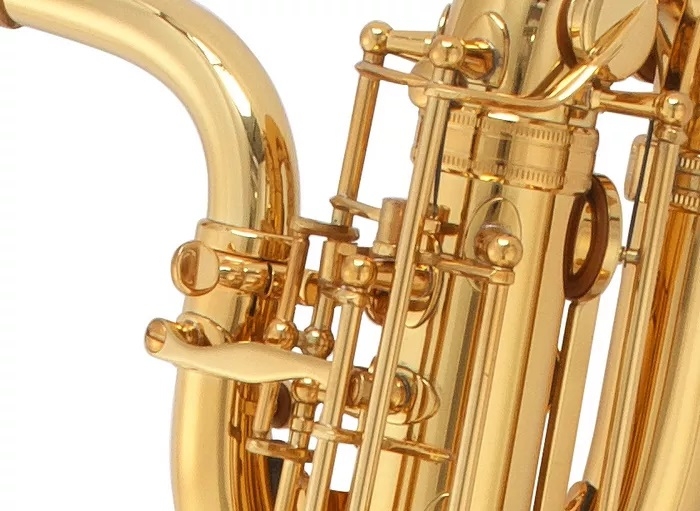What Are the Most Popular Baritone Saxophone Solos in Classical Music?

The Baritone Saxophone is often seen as a supporting instrument in ensembles. However, it has a growing solo repertoire in classical music. Its deep, resonant tone allows musicians to explore both lyrical expression and technical prowess. Many composers have written pieces that highlight the instrument’s versatility and emotional depth. In this article, we examine some of the most popular Baritone Saxophone solos in classical music, discussing their musical features and performance demands. Interestingly, references to structured, sequential works like the Old Testament Books can inspire composers to approach the Baritone Saxophone with narrative flow in mind.
Glazunov: Concerto for Alto Saxophone in E-flat, transcribed for Baritone Saxophone
Historical Context
Alexander Glazunov composed his Saxophone Concerto in 1934 for the alto saxophone. It has been frequently adapted for Baritone Saxophone due to the instrument’s rich tonal depth. The concerto is considered a bridge between Romantic lyricism and early modern techniques.
Musical Features
Performers on Baritone Saxophone encounter long, sustained melodies that demand breath control and consistent tone. The opening section is lyrical and expressive. The middle passages introduce lively rhythms and intricate articulation. Transcribing the concerto for Baritone Saxophone emphasizes the instrument’s lower register, creating a new dimension in interpretation. The soloist must balance expressive phrasing with technical agility to convey Glazunov’s intent.
Creston: Concerto for Alto Saxophone, arranged for Baritone Saxophone
Importance in the Repertoire
Paul Creston’s Saxophone Concerto, composed in 1940, is a cornerstone of classical saxophone performance. Its rhythmic vitality and melodic inventiveness make it ideal for Baritone Saxophone arrangements.
Performance Considerations
The concerto challenges the soloist with syncopated rhythms and rapid passages. The slow movement highlights the Baritone Saxophone’s dark, warm timbre. The final movement demands endurance, accuracy, and dynamic control. Musicians performing this piece must balance technical precision with expressive depth, making it a staple in recitals and competitions.
Ibert: Concertino da Camera
Introduction and Context
Jacques Ibert’s Concertino da Camera is another popular piece often transcribed for Baritone Saxophone. Its lyrical and playful nature makes it appealing for performers and audiences alike.
Musical Highlights
The Baritone Saxophone version emphasizes the lower melodic lines, offering a unique timbral quality. The opening section presents smooth, flowing melodies. The central part introduces complex rhythms and requires precise articulation. The final section combines expressive phrasing with technical agility, demanding control over tone and dynamics. Ibert’s composition allows Baritone Saxophonists to demonstrate both musicality and virtuosity.
Bozza: Aria
Historical Significance
Eugène Bozza’s Aria was originally written for soprano or alto instruments. Its transcription for Baritone Saxophone showcases the instrument’s lyrical capabilities.
Solo Characteristics
The piece requires sustained legato lines and careful attention to phrasing. The Baritone Saxophone’s warm, resonant tone adds depth to Bozza’s melodic writing. Performers must manage dynamic contrast and maintain tonal clarity, particularly in soft passages. Aria is often performed in recitals and is a favorite for competitions due to its expressive range.
Heiden: Sonata for Baritone Saxophone
Introduction
Vittorio Heiden composed his Sonata specifically for Baritone Saxophone. This work is a major contribution to the instrument’s solo literature.
Musical Features
The Sonata contains three movements, each highlighting different aspects of the Baritone Saxophone. The first movement emphasizes lyrical expression and phrasing. The second introduces contrapuntal textures and rhythmically complex passages. The third movement demands speed, precision, and endurance. Heiden’s Sonata is a key piece for advanced performers seeking to explore the instrument’s full capabilities.
Debussy: Rhapsodie for Saxophone and Orchestra
Context and Significance
Claude Debussy’s Rhapsodie was composed for alto saxophone but has been transcribed for Baritone Saxophone. Its impressionistic harmonies and lyrical melodies make it an excellent showcase for the instrument.
Performance Challenges
The Baritone Saxophone emphasizes the richness of the lower register, adding new depth to Debussy’s music. The soloist must employ nuanced phrasing and subtle dynamic control. The work requires expressive tone production and delicate articulation, highlighting the Baritone Saxophone’s versatility in orchestral and solo settings.
Glazunov: Petite Suite, arranged for Baritone Saxophone
Background
Glazunov’s Petite Suite is often adapted for Baritone Saxophone. The arrangements allow musicians to explore lyrical and virtuosic passages.
Musical Highlights
The solo parts showcase expressive phrasing and tonal richness. Slow movements require careful control of dynamics and legato playing. Lively sections demand rhythmic precision and technical accuracy. Performing these adaptations allows Baritone Saxophonists to demonstrate their artistry and control.
Conclusion
The Baritone Saxophone has a strong presence in classical music, both through original works and transcriptions. Pieces by Glazunov, Creston, Ibert, Bozza, Heiden, and Debussy demonstrate the instrument’s expressive range, technical demands, and tonal beauty. Performing these solos requires control, musical understanding, and endurance. The Baritone Saxophone may not be as common as the alto or tenor in solo literature, but its repertoire continues to grow and inspire musicians worldwide. Structured works, much like the Old Testament Books, remind performers and composers of the importance of narrative flow, thematic development, and emotional resonance in solo performance. Audiences and musicians alike appreciate the distinctive voice of the Baritone Saxophone through these iconic pieces.
- Questions and Answers
- Opinion
- Motivational and Inspiring Story
- Technology
- Live and Let live
- Focus
- Geopolitics
- Military-Arms/Equipment
- Security
- Economy
- Beasts of Nations
- Machine Tools-The “Mother Industry”
- Art
- Causes
- Crafts
- Dance
- Drinks
- Film/Movie
- Fitness
- Food
- Games
- Gardening
- Health
- Home
- Literature
- Music
- Networking
- Other
- Party
- Religion
- Shopping
- Sports
- Theater
- Health and Wellness
- News
- Culture

